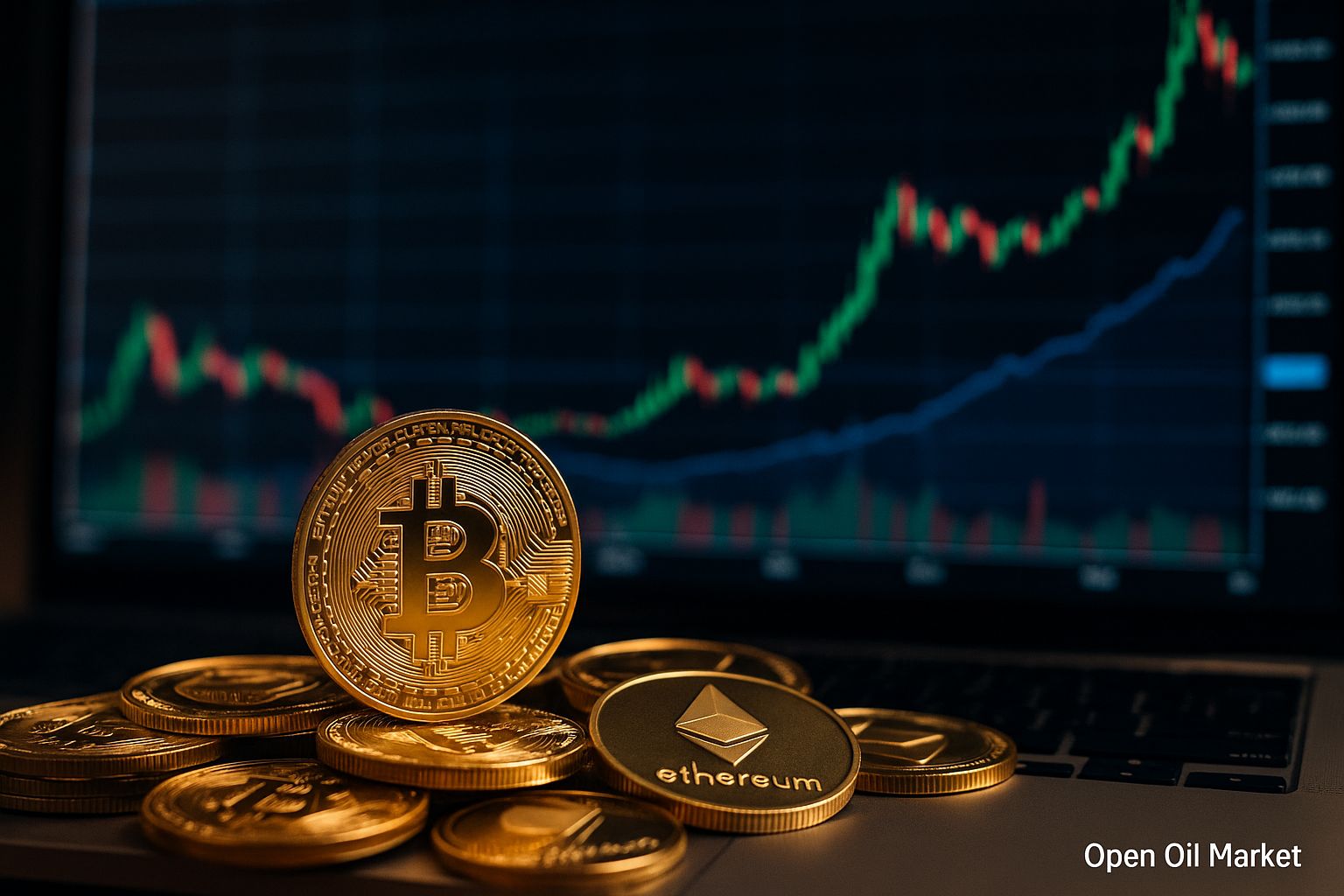
In-Depth Review of Economic Events and Corporate Reports for Sunday, 21 September 2025: Analysis of Federal Reserve Policy, Situation in China, and Market Dynamics in the USA, Europe, Asia, and Russia for Investors
Sunday provides markets a respite: no macroeconomic releases are scheduled, and investors are digesting the events of the past week. The Federal Reserve's decision to lower interest rates and shift towards an easing policy has bolstered risk appetite, with the S&P 500 index nearing record levels. Concurrently, there is a cautious sentiment in Asia due to signs of economic slowdown in China, although Chinese authorities promise stimulus measures. In Europe, there are no new negative surprises: inflation is gradually cooling, and geopolitical uncertainty is diminishing. On the corporate front, there is a pause before the new earnings season, shifting focus to broader market factors. It is crucial for investors to utilise the weekend lull to assess the balance of risks and prepare for the trading week ahead.
Macroeconomic Calendar (MSK)
No key macroeconomic statistics are scheduled for Sunday, 21 September, leaving global markets in a wait-and-see mode ahead of the new working week.
USA: S&P 500 Record and Fed Policy Easing
- The Federal Reserve of the United States, at its mid-September meeting, lowered the rate for the first time in several years, signalling the beginning of a monetary policy easing cycle. The regulator cited slowing economic growth and inflation moving towards target levels, justifying a more accommodative stance.
- US equity markets responded with gains: the S&P 500 index reached an all-time high on expectations of cheaper borrowing costs and support for corporate profits. The tech-heavy Nasdaq is also surging as investors seek growth assets.
- Long-term Treasury yields are exhibiting volatility following the Fed’s decision. While the federal funds rate has been reduced, market rates on ten-year USTs are oscillating, reflecting a reassessment of inflation and economic growth expectations.
Asia: Stimulus for China and the Bank of Japan's Stance
- The Chinese economy is sending mixed signals: recent data indicate a slowdown in industrial and real estate growth. Chinese authorities have assured markets of their readiness to implement new fiscal and monetary stimuli to support demand and prevent a sharper downturn.
- Japan: The Bank of Japan maintained its ultra-loose monetary policy (negative rates and yield curve control) at its meeting on 19 September. Inflation in Japan remains above the target of 2%, but the regulator prefers to wait for more consistent price trends before changing course. This keeps the yen weak, while the Nikkei 225 hovers near multi-year highs supported by export-oriented companies.
- Other Asian markets are trading cautiously. The absence of new data over the weekend compels investors to focus on external factors: the US stock rally and outlook for stimulus measures in China will dictate the dynamics at the open of markets in Tokyo, Shanghai, and Seoul on Monday.
Commodity and Currency Market: Oil, Gold, and the Rouble
- Oil: Brent crude prices are holding near local autumn highs. Following a sharp rise earlier amid extended OPEC+ production cuts and declining inventories, prices have stabilised around $70 per barrel in recent days. The oil market is balancing between supportive factors (Fed policy easing, improved demand in Asia) and constraints (concerns over the Chinese economy and rising non-OPEC production).
- Gold: Gold prices are fluctuating near record levels. Last week, the precious metal hit a multi-year high on expectations of Fed rate cuts and a weaker dollar, surpassing $3000 per ounce. However, following the actual decision by the Fed, some speculative demand has waned, causing a slight retreat in gold prices, which nonetheless remains an attractive hedge in a loosening monetary environment.
- Currencies and the Rouble: The US dollar, after an initial dip on dovish signals from the Fed, strengthened by the end of the week: the DXY index is consolidating around 100 points. The euro remains near $1.19–$1.20, reflecting moderate optimism regarding the Eurozone. The Russian rouble is trading relatively steadily at around 90 ₽ per dollar, supported by high commodity prices and the absence of negative surprises in the Russian economy. CIS investors are monitoring exchange rate dynamics: further easing of the Central Bank of Russia's policy could slightly weaken the rouble, while high oil prices and the impending tax period traditionally bolster the national currency.
Corporate Sector: Earnings and Company News
- The global corporate calendar is quite sparse on this day: Western stock exchanges are closed, and therefore large public companies (S&P 500, Euro Stoxx 50) are not releasing financial statements on 21 September. Investors are using the pause between quarterly earnings seasons to analyse already released results and evaluate forecasts.
- In the US, the earnings season for the second quarter has concluded, with most S&P 500 companies exceeding profit expectations. This has been one of the drivers of the summer rally: strong results from technology giants and consumer companies have strengthened confidence in demand resilience. For instance, recent reports from Oracle and FedEx pointed to revenue growth driven by cloud services and a stable consumer sector, respectively.
- European companies within the Euro Stoxx 50, during the interseasonal period, have not delivered new data; however, previous semi-annual results were generally solid. The banking and industrial sectors in Europe are showing mixed dynamics – banks' profits are rising amid increased ECB rates, while manufacturing corporations have experienced a slight decrease in margins due to high energy costs. European investors are awaiting new guidance in the form of data on business activity and consumption to assess profit prospects for the end of the year.
- In Asia, attention has been drawn to Chinese technology giants: although Alibaba and other online retail companies released resilient earnings reports earlier, the market remains concerned about the slowdown in China's economy. Japanese corporations have completed their publication of results for the second quarter: many exporters (auto manufacturers, electronics) reported profit growth due to a weak yen. Ahead is the third-quarter earnings season, which will commence in October; investors are already eyeing companies in the semiconductor, retail, and energy sectors, anticipating new guidance from them.
Other Regions and Indices: Euro Stoxx 50, Nikkei 225, MOEX
- Euro Stoxx 50: The leading European index ends the week relatively unchanged, consolidating after recent growth. A positive external backdrop (Fed easing, absence of trade war escalation) is balanced by internal factors: the Eurozone is exhibiting moderate economic slowdown, although inflation is declining towards ECB target levels. The absence of new sanctions or crises supports stocks of European exporters and banks. Focus in the upcoming week will be on PMI data and speeches from ECB officials, which may set the tone for the Euro Stoxx 50.
- Nikkei 225 / Japan: The Japanese stock market is at its highest points in several decades. The Nikkei 225 index has gained momentum from the combination of a weak yen and an ultra-loose policy by the Bank of Japan, which improves export performance for the corporate sector. Following the earnings season (many Japanese companies exceeded profit forecasts), local drivers are scarce, so the Nikkei's dynamics will depend on the global investor sentiment and yen exchange rate volatility. Any hints at policy changes by the BoJ or fluctuations in demand from China may impact the Japanese market.
- MOEX / Russia: The Russian stock index on the Moscow Exchange is experiencing relative stability in September. The peak of financial reporting for the first half of the year is already behind: major companies reported at the end of August and early September, demonstrating generally stable results. High oil and gas prices support stocks in the oil and gas sector, offsetting risks from sanctions. The financial sector benefits from the recent reduction of the key rate by the Central Bank of Russia, which invigorates credit activity, even if it may slightly compress banks' margins. Investors on the MOEX are now monitoring companies' dividend plans and possible government measures regarding the budget rule – these factors will be decisive for the further movement of the Russian market.
Day’s Summary: What Investors Should Focus On
- Fed Monetary Policy: Even on a Sunday, it is essential to pay attention to comments from Federal Reserve representatives. Any new signals regarding the pace of further rate reductions or assessments of the US economy could affect bond yields and sentiment across all markets at the beginning of the week.
- Chinese Stimuli: News from China over the weekend (for instance, announcements of measures to support real estate or consumption) may set the tone for the Asian session on Monday. Investors should evaluate whether Beijing is taking adequate steps to stimulate the economy, as this will influence demand for commodities and the profitability of many global companies.
- Commodities and Geopolitics: Prices for oil and metals may respond to over-the-counter news in the absence of trading. Should geopolitical risks or extraordinary events arise over the weekend (for example, OPEC+ agreements, conflicts), sharp price fluctuations in commodities may occur on Monday. It is prudent to incorporate these factors into the investment strategy.
- European Indicators: Although no statistics are set for today, important data (such as business activity indices, confidence, or inflation reports) will be released tomorrow. Their outcomes will determine the movement of the Euro Stoxx 50 and EUR/GBP exchange rates. Investors should prepare for the potential volatility in European assets at the start of the week.
- Risk Balance and Positions: Sunday is a suitable time to reassess the portfolio. In light of record highs in several indices and upcoming events next week, it is wise to establish target volatility ranges. Using limit orders, partial profit-taking, and protecting positions (hedging) will enable a more confident approach to the new week, even if sudden news disrupts market calm.




